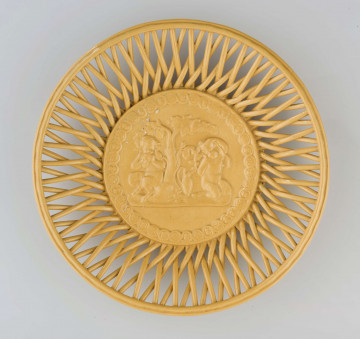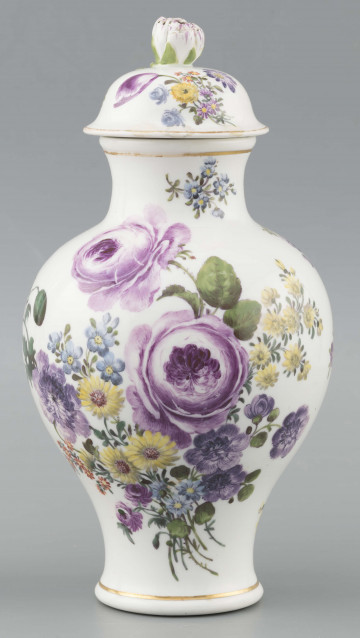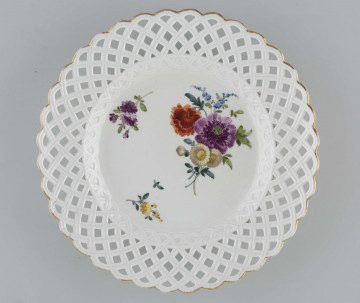
Basket
1840 — 1850
National Museum in Lublin
Part of the collection: Faience, ceramic and metal vessels and items
The ceramic basket comes from the Lubartów factory, which operated for only ten years. The enterprise was founded by Count Henryk Łubieński - an industrialist, financier and vice-president of the Bank of Poland. When planning business ventures in the Lublin area, in 1839 he purchased the vast Lubartów estate from the Sanguszko family. He opened a ceramic factory there and large steelworks in Serock. The factory of ceramics was located in the manor farm buildings: former granaries and stables transformed into factory premises. Since 1841 the sole owner was the founder's nephew - Paweł Łubieński. In the first years of its activity, the position of director of the "Faience, terrolite, porcelain and clay factory" was held by a German, Robert Wendler, who later moved to the porcelain factory in Tomaszów Lubelski. After him, the factory was headed by Teodor Mattschas. Already in the first years there were problems. Henryk Łubieński was accused of financial embezzlement and, as the result of allegations of mismanagement, the Lubartów estate was seized by the Bank of Poland. The factory operated for a few more years but in 1850 the situation was so bad that it was decided to liquidate it. In the short period of its activity the Lubartów factory managed to make a name for itself and its products found many buyers. Their main advantages were durability, beautiful shapes, precision of workmanship and attractive toppings. English ceramics was the model for their production. The products were stamped with the inscription "Lubartów" in italics or italics or with a stamp with the Lewart coat of arms and the inscription "Lubartów". Faience and stoneware have a unique style. The characteristic feature of the plates, saucers, woven baskets, vases is their one-tone colour - white, cream, grey, brown, brown in various shades, black. The artistic elements in the form of various motifs are an interesting decoration. The discussed basket with open-work sides made of parallel rods, entwined in the middle, at the edge wrapped with tape, has a round bottom decorated with a plastic motif of a bouquet of flowers tied with a ribbon. Apart from tableware, the Lubartów workshop produced decorative items of a sculptural nature, such as figurines of human figures or animals (most often dogs).
Author / creator
Dimensions
cały obiekt: height: 19 cm, width: 5,7 cm
Object type
dish
Technique
firing
Material
porcelain clay
Creation time / dating
Creation / finding place
Owner
The National Museum in Lublin
Identification number
Location / status

1840 — 1850
National Museum in Lublin

1860 — 1780
National Museum in Lublin

1764 — 1337
National Museum in Lublin
DISCOVER this TOPIC
National Museum in Szczecin
DISCOVER this PATH
Educational path